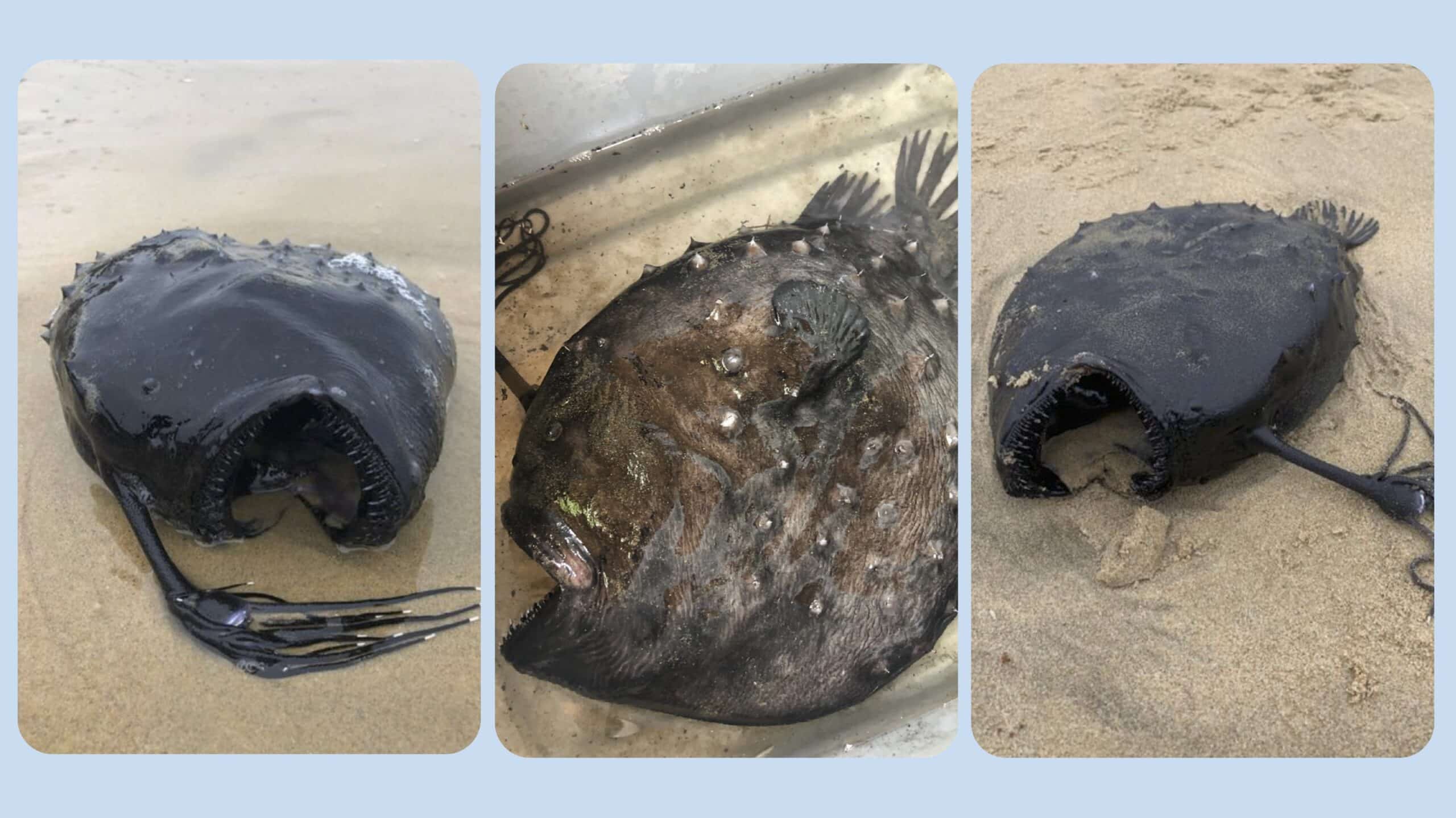By Sean Zucker –
A beachgoer recently had a walk to remember along Newport Beach in California, though not in the romantic coming of age type way. Ben Estes stumbled across a freaky looking fish earlier this month while at Crystal Cove State Park and it might be a sign of something much scarier—there is a lot of waste sinking into the ocean’s depths.
Davey’s Locker Sportfishing and Whale Watching, a local boat tour company, were first to release pictures of the fish, which has since been identified as a pacific football fish. Estimated at 18 inches, the football fish sports a terrifying blend of black colorization and monster teeth, and is rarely seen anywhere near shore.
The California Academy of Sciences, in fact, reports this fish typically lives in the Pacific Ocean at depths of 2,000 to 3,300 feet, where no sunlight penetrates. The deep-sea fish is one of 300 living species of anglerfish that’s normally found at those extreme depths.
“Though the fish itself is not rare, it is extremely rare to see on this intact along a beach in southern CA,” Davey’s Locker noted.
The body of the fish is being held by the California Department of Fish & Wildlife, CNN reports. The official reason of why the creature made a rare trip to shore is yet to be determined. Crystal Cove State Park, however, highlighted, the wonder of being able to catch a glimpse of this rare breed. “Seeing this strange and fascinating fish is a testament to the diversity of marine life lurking below the water’s surface… and as scientists continue to learn more about these deep-sea creatures it’s important to reflect on how much is still to be learned from our wonderful ocean, ” the park reported.
Unfortunately for all its wonder, the ocean is increasing polluted, even at its deepest levels, threatening deep-sea life like the football fish.
In 2017 the United Nations went as far as to warn there will be more plastic in the ocean than fish if plastic use continues at its current rate. It suggested people stop using single-use plastic items such as plastic bags and plastic bottles or the effects may be irreversible.
“In 1950, the world’s population of 2.5 billion produced 1.5 million tons of plastic; in 2016, a global population of more than 7 billion people produced over 300 million tons of plastic—with severe consequences for marine plants and animals,” the U.N. then explained.
The research journal Marine Policy echoed the U.N.’s warning after analyzing reports, videos and pictures collected in the Deep-sea Debris Database.
The database includes reports from 5,010 deep sea submersible and remote operated vehicles dives undertaken since 1983. Plastic debris was observed in 3,425 of those dives, 89 percent of which was single-use plastic products. Marine organisms were observed in 17 percent of those debris’ images.
“This study shows that plastic debris, particularly single-use products, has reached the deepest parts of the ocean. Whereas regulation on the production of single-use plastic and the flow of such debris into the coast are the only effective ways to prevent further threats to deep-sea ecosystems, successful management of plastic waste is possible through internationally harmonized practices based on scientifically sound knowledge,” it concluded.
Why the alarm? The deep ocean is absolutely critical for the maintenance of the Earth’s climate. The oceans have taken up over 90 percent of the heat accumulated in the Earth’s climate over the last 4 decades. One third of that extra heat is stored in the deep ocean and it has absorbed 50 percent of the CO2 released into the atmosphere.
Not too shabby for the great abyss.













